Luke Soules was one of the first on the planet to get his hands on an iPad. And he wasted no time taking it apart.
After staking out three locations in the Eastern US, Soules — co-founder of teardown firm iFixit — cracked the device open on Saturday to unearth NAND flash memory by Samsung Electronics, an LCD display from LG Display and microchips from Broadcom Corp, Texas Instruments Inc and NXP Semiconductor.
Soules and his outfit provide and advise on components in Apple gadgets — and also identifies them. The work of teardown firms such as iFixit may prove crucial in identifying which manufacturer gets its parts into a device expected to sell upwards of 5 million units this year alone.
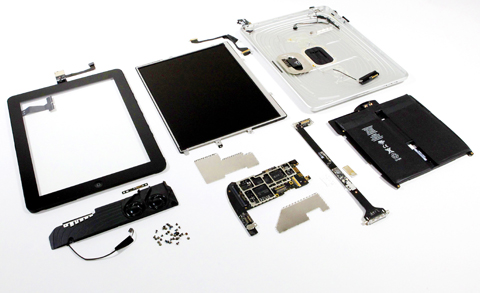
PHOTO: REUTERS
Soules had slept overnight in the parking lot outside an Apple mall store in Richmond, Virginia. He was the first to walk out of the store, moments after the outlet opened at 9am, iPad in hand.
Store employees clapped and gave him high-fives. He grinned, but moved quickly. There was work to do.
Without a second’s dawdling, Soules hopped in a waiting car and raced a few short kilometers to the house of a friend, where he had his tools of destruction ready to go. He barely paused to admire the iPad out of the box. He didn’t even turn it on.
The secretive Apple is famous for designing sealed-up devices intended to discourage nosy gadget heads from poking around in them, and the iPad was no different.
The iPad had no screws. But working with a tool called a spudger, it took Soules only 10 minutes to separate the iPad’s handsome, 24.6cm facing from its silver-backed casing.
He surveyed the iPad’s design, a maze of parts that would be utterly inscrutable to most people.
“That’s very, very nice,” he said almost reverentially.
Teardown firms are hired by an array of clients, their data used for competitive intelligence, in patent disputes or to keep current on industry benchmarks.
By 9:30am, Soules had turned the iPad inside out and was sharing its secrets with the world.
There is strong competition to be first to tear open Apple devices and reveal the design, chips and components within and iFixit has gained a measure of fame for their work.
Months of anticipation had built ahead of the iPad launch and — at least in technology circles — almost as much excitement about what’s on the inside of the device.
Within 45 minutes, iFixit had left the iPad — the gleaming symbol of Apple’s technological wizardry — in tatters, its various parts naked against a crisp white backdrop.
Soules moved at a rapid clip, narrating as he took pictures and streamed to colleague Kyle Wiens and others in California, who were posting them online and helping identify parts.
IFixit’s near-live teardowns have become staples for gadget fans during Apple product launches.
As a veteran of many previous efforts, Soules was prepared for any tricks Apple might throw his way, but the iPad didn’t prove to be too enormous of a challenge to take apart, as some previous devices have.
Soules had removed the main circuit board of the iPad by 10am. The 10.2cm long, 28g board was covered by an electromagnetic interference shield, and underneath were all the microprocessors that make the device tick.
“The vast majority of the brains of the iPad are on this little board. It’s amazing what they can fit into such a small space,” Soules said.
One of first identifiable parts was the NAND flash memory, which was made by Samsung, which has supplied components for other Apple devices. Soules also quickly noted chips from Broadcom and Texas Instruments.
There were also at least three chips carrying Apple branding. Apple is known to hide the identities of some chipmakers in its products by having them stamp an Apple logo on their parts. The main iPad chip is an Apple creation; its very own A4 processor controls the iPad’s programs.
IFixit determined that Samsung is manufacturing the A4 chip for Apple.
After removing the circuit board, Soules dug in further using a Torx screwdriver to manipulate the minuscule screws inside the iPad. His fingernails gingerly pried open casings.
“The teardown process is bit easier if I keep my fingernails on the long side,” he said.
Soules discovered the iPad’s battery is not soldered into place, which means that replacing it is possible for the do-it-yourself crowd.
IFixit promotes device repair as a means to cut down on electronic waste.
Apple requires users to mail iPad units back to the company, which will change the battery for a hefty fee.
By 10:45am Soules was cautiously fiddling with the iPad’s display, the most expensive component.
While he was unable to determine who made the display on his unit, another iFixit teardown at a different location revealed one from LG, meaning Apple could be using displays from more than one supplier.
Besides Richmond, iFixit had also ordered iPads at addresses near Indianapolis and Orlando, Florida. The company had people in both areas, home to FedEx shipping hubs.
IFixit thought it might be able to get a few hours jump on the competition by staking out the FedEx hubs the morning of the launch, to intercept one of the devices.
But that didn’t pan out, so they resorted to standing in line — at the head of the line actually — in three cities.
The Federal Communications Commission also managed to steal at least some of iFixit’s thunder.
Bloggers discovered on Friday that the FCC had posted pictures of the insides of pre-production iPads on its Web site, even though Apple had requested that they keep them confidential.
IFixit spent much of the night identifying the parts, which were not necessarily the same as those in real iPads.
By noon on Saturday, the bulk of the iPad teardown was done. But there will be at least another week of analysis, using sophisticated equipment that can cut into components to determine how they were made, and who made them.
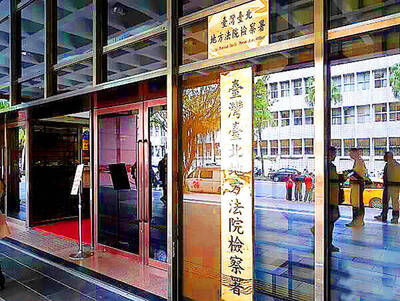
INVESTIGATION: The case is the latest instance of a DPP figure being implicated in an espionage network accused of allegedly leaking information to Chinese intelligence Democratic Progressive Party (DPP) member Ho Jen-chieh (何仁傑) was detained and held incommunicado yesterday on suspicion of spying for China during his tenure as assistant to then-minister of foreign affairs Joseph Wu (吳釗燮). The Taipei District Prosecutors’ Office said Ho was implicated during its investigation into alleged spying activities by former Presidential Office consultant Wu Shang-yu (吳尚雨). Prosecutors said there is reason to believe Ho breached the National Security Act (國家安全法) by leaking classified Ministry of Foreign Affairs information to Chinese intelligence. Following interrogation, prosecutors petitioned the Taipei District Court to detain Ho, citing concerns over potential collusion or tampering of evidence. The
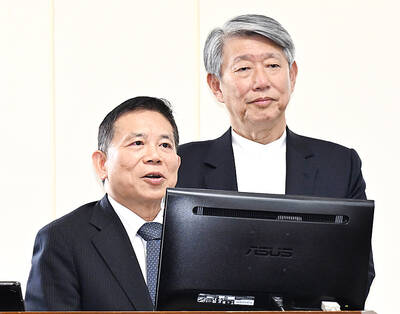
NEGOTIATIONS: Taiwan has good relations with Washington and the outlook for the negotiations looks promising, Minister of Economic Affairs J.W. Kuo said Taiwan’s GDP growth this year is expected to decrease by 0.43 to 1.61 percentage points due to the effects of US tariffs, National Development Council (NDC) Minister Paul Liu (劉鏡清) said at a meeting of the legislature’s Economics Committee in Taipei yesterday, citing a preliminary estimate by a private research institution. Taiwan’s economy would be significantly affected by the 32 percent “reciprocal” tariffs slapped by the US, which took effect yesterday, Liu said, adding that GDP growth could fall below 3 percent and potentially even dip below 2 percent to 1.53 percent this year. The council has commissioned another institution
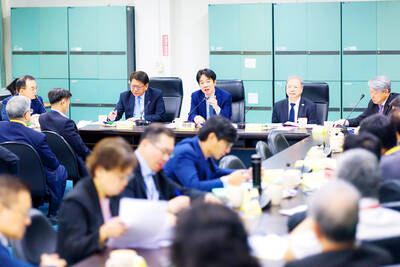
NEGOTIATIONS: The US response to the countermeasures and plans Taiwan presented has been positive, including boosting procurement and investment, the president said Taiwan is included in the first group for trade negotiations with the US, President William Lai (賴清德) said yesterday, as he seeks to shield Taiwanese exporters from a 32 percent tariff. In Washington, US Trade Representative Jamieson Greer said in an interview on Fox News on Thursday that he would speak to his Taiwanese and Israeli counterparts yesterday about tariffs after holding a long discussion with the Vietnamese earlier. US President Donald Trump on Wednesday postponed punishing levies on multiple trade partners, including Taiwan, for three months after trillions of US dollars were wiped off global markets. He has maintained a 10 percent
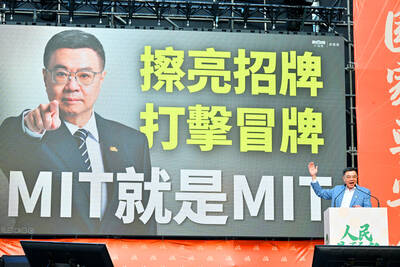
TRADE: The premier pledged safeguards on ‘Made in Taiwan’ labeling, anti-dumping measures and stricter export controls to strengthen its position in trade talks Products labeled “made in Taiwan” must be genuinely made in Taiwan, Premier Cho Jung-tai (卓榮泰) said yesterday, vowing to enforce strict safeguards against “origin laundering” and initiate anti-dumping investigations to prevent China dumping its products in Taiwan. Cho made the remarks in a discussion session with representatives from industries in Kaohsiung. In response to the US government’s recent announcement of “reciprocal” tariffs on its trading partners, President William Lai (賴清德) and Cho last week began a series of consultations with industry leaders nationwide to gather feedback and address concerns. Taiwanese and US officials held a videoconference on Friday evening to discuss the